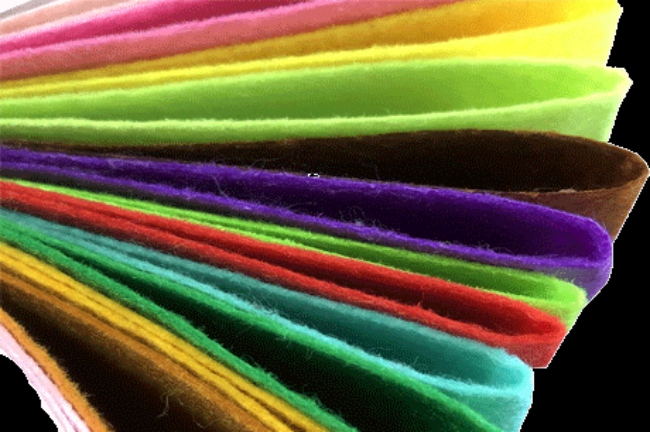Melt-blowing method is to spray the melt extruded by the screw with a high-speed and high-temperature airflow, so that the thin stream of the melt is stretched at a higher magnification to form ultra-fine short fibers, which are then piled on the condensation screen or into the On the net drum, a continuous short fiber net is formed, and then a non-woven fabric is made by self-adhesive or other reinforcement processes.
The process of meltblown non-woven fabrics also uses the melt spinning method, that is, extruding the melt streamlined fibers from the spinneret holes. But the difference from the spunbond method is that the spinneret head used in the meltblown method has specially designed air ducts (air slits) on both sides of the spinneret hole. The heated high-pressure air is blown out from the air duct to affect the melt. The thin stream is stretched at a high speed to be blown into ultra-fine short fibers. After the ultra-fine short fibers are cooled by the cold air blowing under the spinneret, they are sprayed at a high rate to a fiber collection device with negative pressure, mainly a net curtain or a web forming drum, to form a fiber web. Finally, the molded non-woven fabric is obtained by adding a fixed type through methods such as self-adhesive or thermal bonding.

This method can be made into a thin sheet or a thicker felt-like material. Meltblown non-woven fabrics are formed from ultra-short fine fibers, with low production line speed and short process flow, but are more complicated. Meltblown non-woven products have large specific surface, high bulkiness, low transition resistance, high filtration efficiency, good surface coverage and shielding performance, but low strength, poor dimensional stability, poor wear resistance, and large air consumption during processing , High energy consumption.
Although the production process of meltblown non-woven fabrics is shorter than that of spunbond, the process is more complicated and has many influencing factors:
1. Melt spinning
In the process of meltblown spinning, the spinning fiber is thin, the processing volume is large, and the drafting speed is fast, so it has higher requirements for the melt of the extrusion spinning. In order to meet the higher requirements of product quality, it is required that the extrusion melt pressure is stable, the melt stream is uniform, and the raw materials are completely plasticized. In order to avoid excessive impurities in the melt from blocking the spinneret and affecting the continuity of the spinneret, the melt must pass through a filter device before entering the meltblown die.
The above information is provided by floor protection mat factory.